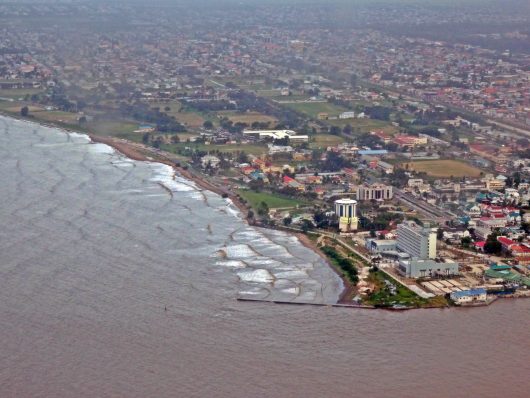LESSONS IN THE CAUSES OF POVERTY IN GUYANA

In this age of development, many small countries look toward a future of economic growth and a higher quality of life. With the level of cooperation among states increasing (e.g., the Sustainable Development Goals), the possibility of eradicating extreme poverty grows more and more realistic. However, the number of smaller states is also increasing. Smaller states are often the most vulnerable to poverty and slow growth, and Guyana is no exception. The causes of poverty in Guyana are complex, but taking the time to learn about them can assist in creating solutions for the future.
Guyana is a country in South America, north of Brazil and east of Venezuela. A small nation, Guyana’s population only stands at 773,300 people, but over 50 percent of citizens currently live abroad. The nation formerly belonged to the British but won its independence in 1962. As a result, Guyana is the only English-speaking country in South America and has many ethnic differences among its people.
Like any country with limited resources, the available resources have to provide for more people than they were intended to. Combined with weak infrastructure, the situation results in weak education and healthcare providers. This has resulted in what is known as a “brain drain,” where the most educated people leave the country for better opportunities. Although these are a few of the causes of poverty in Guyana, they are just the tip of the iceberg.
Economic Causes
The economic causes of poverty in Guyana revolve around the country’s lack of resources. The country depends on agriculture and extraction of resources. Because it can only export food products, especially sugar, and some natural resources, it imports most of its goods. The country has a GDP of $3 billion, but the country is heavily in debt to other countries. Poor policies toward business and excessive spending have also contributed to Guyana’s 35 percent poverty rate. However, Guyana’s GDP does show a small positive increase.
Social Causes
One of the after-effects of British colonial rule in Guyana is the presence of many racial groups brought to the country during colonialism. Demographically, Guyana is comprised of primarily East Indians at 40 percent, black people at 30 percent, people of mixed race at about 20 percent and the other 10 percent made up of indigenous peoples and other races. African slaves were first brought to the country to work sugar plantations; after abolishing slavery, Indian indentured workers were brought to the country to work in the plantations. Because of this, ethnic tensions exist between the two large groups. The tensions contribute to the fractured political state in Guyana.
Political Causes
Politics can illustrate economic grievances in the country, as well as tensions in the country between different groups. The government of Guyana has had problems in the past with corruption, as well as issues with one party controlling most of the power. Many citizens vote along ethnic lines, but with the elections of 2015, there has been a small shift towards unity. In 2015, Guyana elected David Granger, a member of a multi-ethnic party, president. The new administration looked toward stopping the corruption in government that contributed to the current state of the economy.
The causes of poverty in Guyana, like any country, are complex and deep-rooted. Understanding and looking for solutions to poverty in Guyana can help lead to solutions for the rest of the world. With the political shifts in Guyana, it has the opportunity for economic growth and increases in its quality of life and the well-being of its citizens. The developments in this country have the potential to help the entire world in the fight against poverty.
– Selasi Amoani
